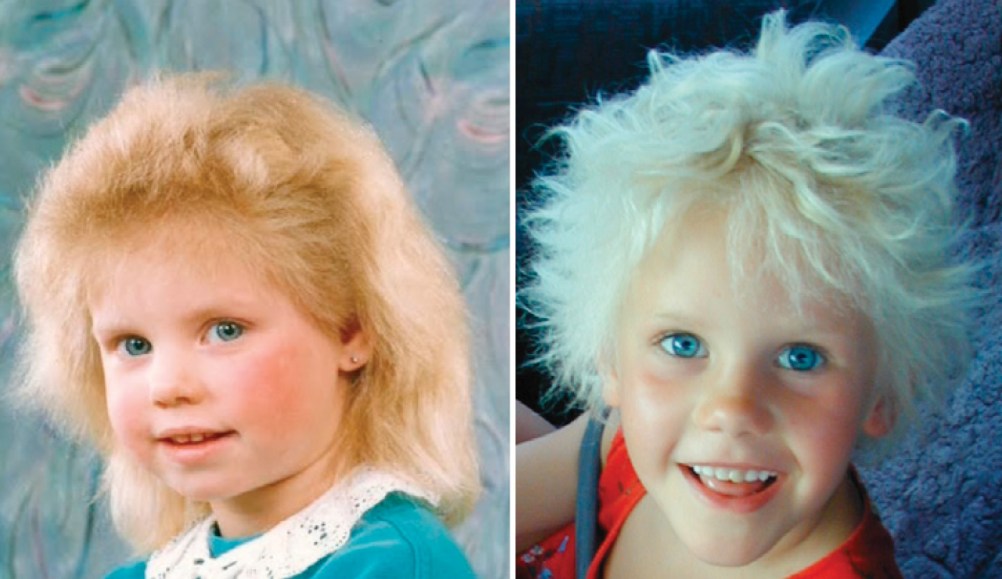
Children with uncombable hair syndrome can have dry, shiny hair that stands away from the scalp.
F.B. Basmanav et al/American Journal of Human Genetics 2016

Children with uncombable hair syndrome can have dry, shiny hair that stands away from the scalp.
F.B. Basmanav et al/American Journal of Human Genetics 2016